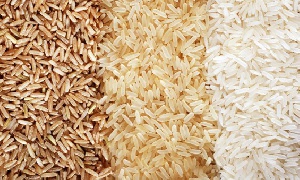he latest Oxford Business School report has revealed that only 34 percent of rice consumed in the country is produced locally, resulting in the importation of 680,000 tonnes annually.
Even though the country’s domestic production has increased by 12 percent over the 2010-15 period, states the report, domestic consumption increased by double that rate over the same time frame. As a result, Ghana imports between $300 million and $500 million of rice annually. The report further states that, between 1999 and 2008, rice consumption grew from 17.5 kg to 38 kg per capita and is expected to reach 63 kg per capita by 2018.
With population growth, urbanisation and shifting consumer preferences, demand for rice is expected to continue expanding in the coming years. Reversing the country’s import-dependence has been a tough nut to crack by successive governments of the fourth republic, with a number of initiatives failing to boost local rice production to appreciable levels.
In 2008, under President John Kofour, the National Rice Development Strategy (NRDS) was out doored, with the goal of doubling rice production by 2018 and improving quality to increase demand for domestic rice.
As part of the NRDS and the Food and Agricultural Sector Development Policy II, adds the report, the government provided extension services, stabilised prices through the National Buffer Stock Company, which was formed to intervene in staple markets such as maize and rice in order to set minimum prices at the beginning of the growing season. The erstwhile government under President John Mahama also introduced a number of programmes.
In the 2015 budget, the rice production sub-sector received GH¢22 million to boost rice production. Also under the Enhanced Access to Quality Rice Seed Initiative, 200mt of improved rice seed were distributed to 10,000 farmers in the Volta, Northern, Upper East and Upper West Regions to increase productivity. Again, to boost local rice production, 77 tractors, 49 power tillers, 20 rice threshers, 11 rice reapers and six rice mills with their respective components were assembled and sold to farmers.
In addition, 100 units of Cabrio tractors, with multi components, were assembled for sale to farmers on hire purchase. But a number of challenges continue to bog down the sector, including the lack of adequate rice mills. In the Northern Region, for example, where nearly 40 percent of the country’s rice is produced, thousands of bags of rice are locked up in warehouses due to the unavailability of mills to process the commodity, a situation that has compelled the farmers to use manual means of rice processing, which do not meet market demand.
In an interview with the B&FT at last year’s Rice Festival, Mike Bartels, German Cooperation—Green Innovation Center for The Agriculture and Food Sector, Ghana, said there is tremendous opportunity in the rice industry if the private sector increases its participation. “We believe that there is a huge potential in rice production in Ghana which is untapped.
I don’t believe that it is the task of only the government to promote the local rice industry. It is the responsibility of the government to create a conducive framework for innovations that work so that the private sector takes over the task of investing in machinery and logistics that will help the industry thrive,” he said.
Click to view details



Business News of Wednesday, 25 January 2017
Source: B&FT

















